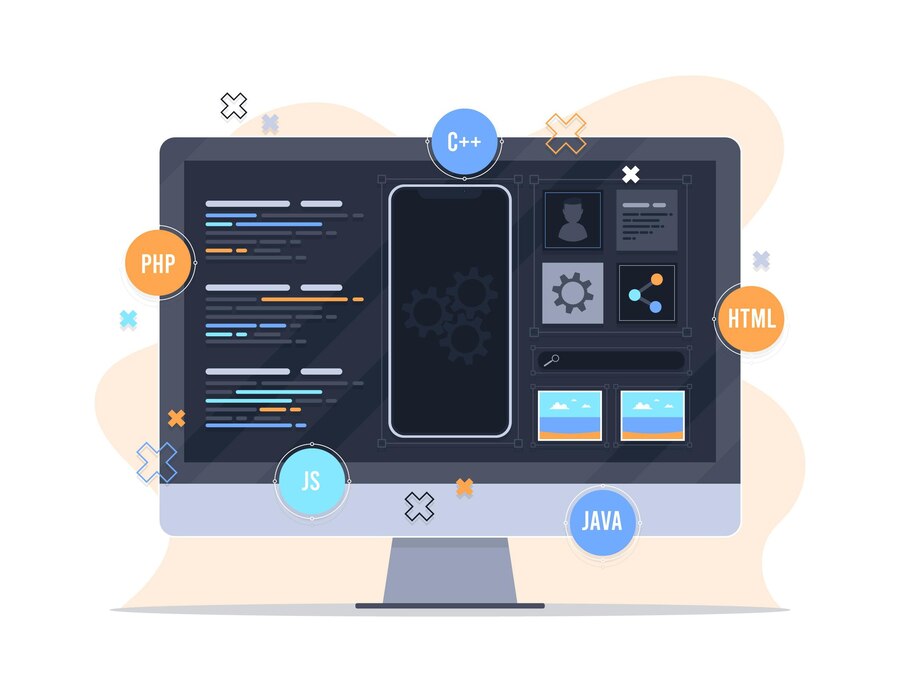In the ever-evolving landscape of technology, desktop applications continue to play a pivotal role in shaping the digital experience. From productivity tools to entertainment platforms, desktop apps offer a robust and versatile solution for a myriad of needs. In this comprehensive guide, we will delve into the world of desktop app development, exploring the key concepts, tools, and best practices that developers need to create engaging and effective applications.
Introduction to Desktop App Development
Desktop applications, as opposed to web or mobile apps, are software programs that run on a user’s personal computer or workstation. These applications leverage the computational power and storage capacity of the local machine to deliver a seamless and responsive user experience. Desktop app development involves creating software for various operating systems, such as Windows, macOS, and Linux, each with its unique set of challenges and opportunities.
Key Advantages of Desktop Applications
Performance: Desktop applications often outperform their web counterparts due to direct access to system resources.
Offline Access: Users can access desktop apps without an internet connection, enhancing accessibility and usability.
Rich User Interface: Desktop apps can offer sophisticated and visually appealing user interfaces, taking advantage of the system’s graphical capabilities.
Integration with Hardware: They can seamlessly integrate with hardware components, such as printers, cameras, and peripherals, providing enhanced functionality.
Choosing the Right Technology Stack
Selecting the appropriate technology stack is crucial for the success of any desktop application development project. The stack encompasses the programming languages, frameworks, and tools used to build the application. Here are some popular choices for desktop app development:
1. Electron
Electron has gained widespread popularity for its ability to create cross-platform desktop applications using web technologies like HTML, CSS, and JavaScript. It powers well-known applications such as Slack, Visual Studio Code, and Discord.
2. JavaFX
JavaFX is a robust framework for building cross-platform desktop applications in Java. With a rich set of UI controls and a modular architecture, JavaFX enables developers to create modern and visually appealing interfaces.
3. Windows Presentation Foundation (WPF)
WPF is a framework developed by Microsoft for building Windows desktop applications. It provides a powerful set of tools for creating desktop applications with rich user interfaces, data binding, and multimedia support.
4. Qt
Qt is a popular C++ framework that facilitates the development of cross-platform applications. It is known for its flexibility and extensive libraries, making it suitable for projects ranging from small utilities to complex software.
Understanding the Development Process
Desktop app development involves a series of steps, from conceptualization to deployment. Let’s break down the process into key phases:
1. Requirement Analysis
Understanding the client’s requirements is the foundation of any successful development project. This phase involves gathering and documenting the functional and non-functional requirements, considering factors like usability, performance, and security.
2. Design and Prototyping
Once the requirements are clear, the next step is designing the application’s architecture and creating prototypes. Design decisions include user interface design, database schema, and overall system architecture. Prototypes help visualize the application’s look and feel, allowing for early feedback and refinement.
3. Development
With a solid design in place, developers can start coding the application. Depending on the chosen technology stack, this phase involves writing code, implementing features, and integrating various components. An iterative approach, such as Agile development, can enhance adaptability to changing requirements.
4. Testing
Thorough testing is critical to ensuring the reliability and performance of the desktop application. This includes unit testing, integration testing, and system testing. Beta testing with real users can provide valuable insights and help identify any unforeseen issues.
5. Deployment
Once the application passes testing, it’s ready for deployment. The deployment process involves packaging the application, creating installers, and distributing it to end-users. This phase also includes updating mechanisms to deliver patches and new features seamlessly.
6. Maintenance and Updates
The lifecycle of a desktop application extends beyond its initial release. Regular maintenance, bug fixes, and updates are essential to address issues, enhance features, and adapt to changes in the operating environment.
User Interface Design Best Practices
An engaging user interface (UI) is key to the success of any desktop application. Here are some best practices for designing a compelling UI:
1. Consistency
Maintain a consistent design across the application to provide a unified and predictable user experience. Consistency in color schemes, fonts, and layout contributes to user familiarity and usability.
2. Intuitive Navigation
Design an intuitive navigation structure that allows users to easily access different features. Consider user workflows and organize the UI in a logical and user-friendly manner.
3. Feedback Mechanisms
Provide visual and auditory feedback to users when they perform actions. This helps in conveying the application’s responsiveness and informs users about the status of their interactions.
4. Accessibility
Ensure that the application is accessible to users with disabilities. Implement features such as screen reader compatibility, keyboard navigation, and text-to-speech support to enhance accessibility.
Security Considerations in Desktop App Development
Security is a critical aspect of desktop application development, as these applications often handle sensitive data. Here are some key security considerations:
1. Data Encryption
Implement strong encryption algorithms to protect sensitive data both in transit and at rest. This includes encrypting communication channels, databases, and any stored files.
2. User Authentication and Authorization
Implement robust authentication mechanisms to ensure that only authorized users can access the application. Additionally, define proper authorization levels to control user permissions and access rights.
3. Code Obfuscation
Obfuscate the application code to make it more challenging for malicious actors to reverse engineer and understand the codebase. This adds an extra layer of protection to intellectual property.
4. Regular Security Audits
Conduct regular security audits and penetration testing to identify and address potential vulnerabilities. Stay informed about the latest security threats and ensure that the application’s dependencies are up to date.
Cross-Platform Development Challenges
While cross-platform development offers the advantage of targeting multiple operating systems with a single codebase, it comes with its own set of challenges:
1. Platform-Specific Design Guidelines
Each operating system has its design guidelines and user expectations. Achieving a consistent look and feel across platforms while adhering to these guidelines can be a challenging task.
2. Performance Variability
Performance can vary across different operating systems and hardware configurations. Developers need to optimize their code to ensure a smooth user experience on diverse platforms.
3. Native Integration
Ensuring seamless integration with platform-specific features, such as file systems, notifications, and system preferences, requires careful consideration and testing.
4. Testing Complexity
Testing a cross-platform application involves testing on multiple operating systems and device configurations. This complexity increases the testing effort and requires comprehensive test plans.
Future Trends in Desktop App Development
The field of desktop app development is continually evolving, with emerging trends shaping the future of software applications:
1. AI Integration
The integration of artificial intelligence (AI) and machine learning (ML) into desktop applications is becoming more prevalent. This includes features such as predictive analytics, natural language processing, and intelligent automation.
2. Augmented Reality (AR) and Virtual Reality (VR)
AR and VR technologies are expanding beyond gaming and entertainment to find applications in fields like design, training, and healthcare. Desktop applications leveraging AR and VR are likely to become more common.
3. Cloud-Native Desktop Apps
The adoption of cloud-native architectures for desktop applications enables seamless collaboration, data synchronization, and remote access. This trend aligns with the broader shift towards cloud computing.
4. Enhanced Security Measures
As cyber threats continue to evolve, desktop applications will incorporate more sophisticated security measures, including biometric authentication, secure enclaves, and advanced encryption techniques.
Conclusion
Desktop app development remains a vibrant and essential domain in the software development landscape. With the right technology stack, a well-defined development process, and a focus on user interface design and security, developers can create desktop applications that not only meet user needs but also stand out in terms of performance and reliability. As technology advances, the future of desktop app development promises exciting possibilities, with AI, AR, VR, and cloud-native architectures shaping the next generation of software applications. Aspiring developers and seasoned professionals alike have a rich and evolving field to explore, contribute to, and innovate within the realm of desktop app development.
Empowering Digital Experiences: Ebryx Tech’s Desktop App Development Services
Ebryx Tech, a leading custom software development company, stands at the forefront of innovation, offering unparalleled expertise in Desktop App Development. With a commitment to crafting seamless and high-performance solutions, Ebryx Tech leverages cutting-edge technologies to build desktop applications that transcend user expectations. The company’s seasoned developers blend creativity with technical prowess to deliver desktop apps tailored to client specifications, ensuring a user-centric approach at every stage of development. From conceptualization to deployment, Ebryx Tech’s Desktop App Development services embody precision, reliability, and a relentless pursuit of excellence, empowering businesses to navigate the digital landscape with confidence and distinction.
For more information please browse following: –
https://ebryxtech.com/our-services/desktop-application-development/














